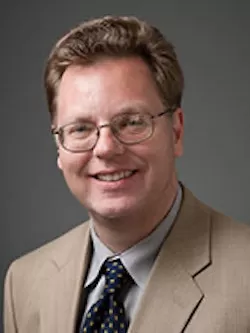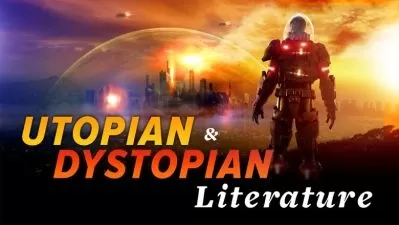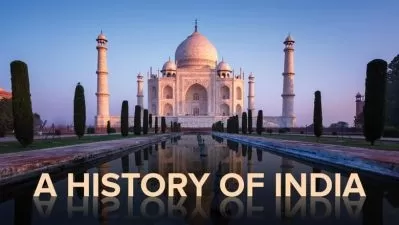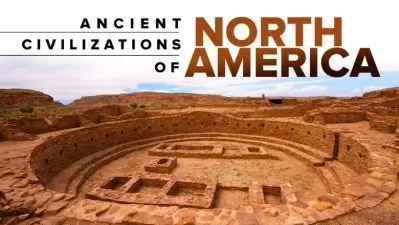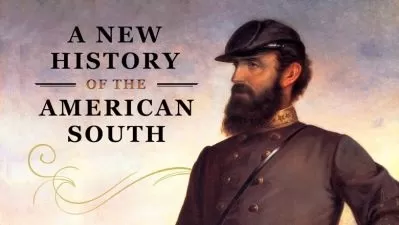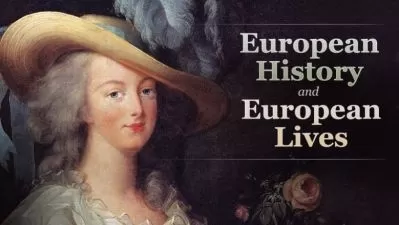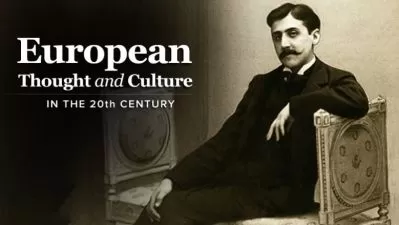Communism in Power: From Stalin to Mao
Vejas Gabriel Liulevicius
6:01:07
Description
In 1924, mourners in Moscow filed past the mummified body of Vladimir Lenin, dead from a stroke after seven tumultuous years working to transform czarist Russia into the first communist state in history. The struggle to determine a successor to Lenin saw the rise of an unscrupulous party official named Joseph Stalin, who outwitted his rivals to become the nation’s new leader, dedicated to perfecting the revolution and exporting it around the globe. By the time of Stalin’s death in 1953, communist governments controlled a third of the world’s population and were mounting a serious challenge to Western democracies. To many people, communism was the unstoppable wave of the future.
Trace the growth of this influential ideology from Stalin’s consolidation of power to the establishment of communist regimes in Eastern Europe, China, Korea, Vietnam, and elsewhere in Communism in Power: From Stalin to Mao. These 12 half-hour lessons shed intriguing light on a revolutionary movement that played an outsized role in the 20th century and continues to shape 21st-century geopolitics.
Your instructor is Professor Vejas Gabriel Liulevicius, Distinguished Professor in the Humanities at the University of Tennessee, Knoxville, where he has been awarded the university’s top two teaching awards. The course is a follow-up to his 12-lesson series The Rise of Communism: From Marx to Lenin, which covers the ideas of Karl Marx and their legacy through the death of Lenin. Communism in Power: From Stalin to Mao picks up the story, focusing on two major trends: Stalinism and Post-Stalinism in Lessons 1–7 and Communism in Asia in Lessons 8–12.
Dictators and Despots
Although Marx envisioned a state governed by workers’ councils, Lenin was just the first in a long line of communist strongmen who seized dictatorial control. Vejas profiles the most prominent of these figures, including:
- Joseph Stalin: Holding undisputed power in the Soviet Union for nearly three decades, Stalin collectivized agriculture and industrialized the economy, all while eliminating potential enemies and dissidents by the millions. He also marshalled his country’s manpower to defeat his former World War II ally, Nazi Germany.
- Mao Zedong: Far exceeding Stalin’s death toll, Mao employed wholesale disruption of society to bring communism to China, via such catastrophic campaigns as the Great Leap Forward and the Cultural Revolution. The backlash against Mao’s policies paved the way for China’s present economic dominance.
- The Kim Dynasty: Long after the collapse of other hardline communist regimes, North Korea retained a Stalinist identity. It was the first case of a communist dynasty, with rule passed down like a kingship through successive generations of the Kim family, including Kim Il-sung, Kim Jong-il, and Kim Jong-un.
- Pol Pot: The 1975 communist takeover of Cambodia by Khmer Rouge revolutionaries led by Pol Pot brought a four-year bloodbath. Cities were emptied, the intelligentsia was purged, and nearly a quarter of the country’s people were systematically executed—until communist Vietnam invaded to stop the madness.
- Ho Chi Minh: Though he started out as a schoolteacher, the Vietnamese revolutionary traveled the world and took on menial jobs in places like France, America, and elsewhere before returning home to introduce communism to Vietnam.
Vejas also analyzes the communist regimes in Eastern Europe, which overturned democratic governments in the wake of World War II with Soviet backing and included such dictators as Walter Ulbricht in East Germany, Nicolai Ceausescu in Romania, and Enver Hoxha in Albania, as well as Yugoslavia’s Josip Tito—a rare communist leader who openly resisted Soviet domination.
The Dream versus the Reality
Each of the leaders faced a unique set of circumstances and adapted accordingly. No cookie-cutter communist states existed. The distinctive national forms that emerged led to clashes within the communist world. Nonetheless, the dream of a global communist civilization lived on, despite setbacks such as:
- Failure of Communism in the United States: As an industrial giant, the United States seemed ripe for communist revolution in the first half of the 20th century. Yet, the nation lacked a mass socialist party. Further, Cold War competition and well-publicized cases of Soviet espionage soured American workers on the cause.
- Khrushchev’s “Secret Speech”: In 1956, Stalin’s successor, Nikita Khrushchev, stunned party members by denouncing Stalin’s sweeping crimes, starting a process of “de-Stalinization.” The revelations broke the spell of Soviet infallibility and sowed anger, distrust, and self-doubt among communists abroad.
- The Berlin Wall: In 1961, East German authorities built a heavily guarded wall on the border between East and West Berlin to prevent the flight of East Germans to the West. The wall became a physical symbol of the “Iron Curtain”—the ideological barrier separating the communist and noncommunist worlds.
- Dissident Movement: Initially committed to communism, many intellectuals lost their faith and publicly renounced specific regimes or even the ideology altogether. Among them, Polish poet and Nobel Prize winner Czesław Miłosz predicted that one day, “the pyramid of [communist] thought would topple.”
A reoccurring theme in Communism in Power: From Stalin to Mao is the contrast of the dream versus reality—the socialist utopia lying just beyond the next draconian step needed to reach Marx’s dictatorship of the proletariat. Among the waypoints was the Gulag system devised under Stalin. Labeled the “Gulag archipelago” by novelist and Nobel Prize winner Aleksandr Solzhenitsyn, the operation was a continent-sized network of forced labor camps large and small, where 15% of the Soviet population ended up. Nearly 2 million people died in the gulags, most of them innocent of any crime or disloyalty to the state.
The journey to the camps often started with a knock on the door in the dead of night, which is when the Soviet secret police liked to make their arrests. Everyone dreaded that knock. One of the only ways to cope was to joke about it. Of course, telling politically tinged jokes was itself grounds for arrest. Vejas recounts a number of these underground anecdotes, including one about an apartment dweller who quakes when he hears pounding on the door in the darkness. But then he’s overjoyed to learn it’s not the police after all—it’s just that the building is on fire.
What often began as a utopian vision of cooperation and revolution too frequently became another way for would-be despots to gain power—and for the ordinary people who joined the revolutions for a bright new future to find oppression again, just within a new system. As you will see in Communism and Power: From Stalin to Mao, political theory and political reality are rarely the same thing.
More details
User Reviews
Rating
Vejas Gabriel Liulevicius
Instructor's CoursesDr. Vejas Gabriel Liulevicius is Lindsay Young Professor of History and Director of the Center for the Study of War and Society at the University of Tennessee, Knoxville. He earned his B.A. from the University of Chicago and his Ph.D. from the University of Pennsylvania. After receiving his doctorate, Dr. Liulevicius served as a postdoctoral research fellow at the Hoover Institution on War, Revolution, and Peace at Stanford University. Professor Liulevicius has won many awards and honors, including the University of Tennessee's Excellence in Teaching Award and a National Endowment for the Humanities Fellowship. At the university he teaches courses on modern German history, Western civilization, European diplomatic history, Nazi Germany, World War I, war and culture, 20th-century Europe, nationalism, and utopian thought. Dr. Liulevicius has published numerous articles and two books: War Land on the Eastern Front: Culture, National Identity, and German Occupation in World War I and The German Myth of the East, 1800 to the Present.
Professor Liulevicius participated in The Great Courses Professor Chat series. Read the chat to learn more about diplomacy and war, terrorism, World War I, and even espionage.
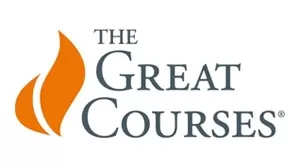
The Great Courses
View courses The Great Courses- language english
- Training sessions 17
- duration 6:01:07
- English subtitles has
- Release Date 2023/08/19





